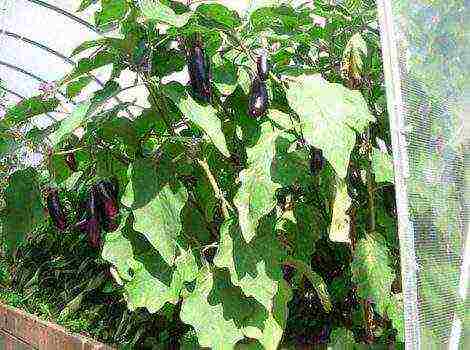Content

Are you tired of constantly buying expensive and not always high-quality meat in the market or in the store, and raising pigs on your own seems more and more attractive idea? If on your site there is a place for a pigsty, and you yourself are ready to devote time to breeding pigs, the only thing left to do is to determine for yourself whether the game is worth the candle?
What conditions are necessary for keeping pigs?
Raising pigs is considered one of the most successful animal husbandry options, profitable and relatively easy. A sow twice a year brings about ten piglets, which grow very quickly, gaining weight well on a small amount of feed. Neither poultry nor cattle will provide such an effective growth. However, you should not count on the fact that the pig can be kept in any conditions and fed with whatever it is necessary. Although these animals are omnivorous, their health and quality of meat largely depends on the diet.
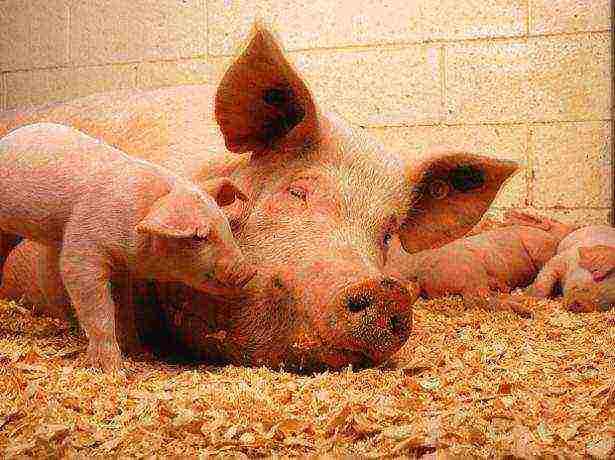
Raising pigs is considered almost the most successful option for animal husbandry, profitable and relatively easy.
If the idea of taking up pig breeding captivated you seriously, first you should familiarize yourself with the basic rules of how to raise pigs and study the characteristics of different breeds. For example, some common breeds of large white pigs are of the bacon type, and no matter how hard you try, you won't be able to get good lard from them.
But small-looking, pot-bellied Vietnamese pigs can provide you with the most delicate meat with a small layer of bacon and, in addition, will not cause much trouble in care. Therefore, it is worthwhile to first weigh all the pros and cons of different breeds, and choose the breed that best suits your goals.
Pig breeding video
So, you have decided on the desired breed of pigs, but before you go after the piglets, take care of creating optimal conditions for their maintenance. The best option would be a fairly spacious barn, divided into three parts: a room with stalls for the constant keeping of animals, a walking area with a canopy and a specially dug bathing pit.
The pens, in turn, consist of a den and a feeding area. For fattening young animals suitable area of the pen is 3 sq. M, for a pregnant uterus - 4 sq. M., And for a lactating sow up to 6 sq. M.
When planning to raise pigs at home, take into account that these animals, due to the peculiarities of their physique, are able to use the slightest omissions in the construction, breaking insufficiently strong fences, partitions and making undermines. Therefore, it is worth taking special care of the strength of the pigsty. In addition, in the pig room, consider:
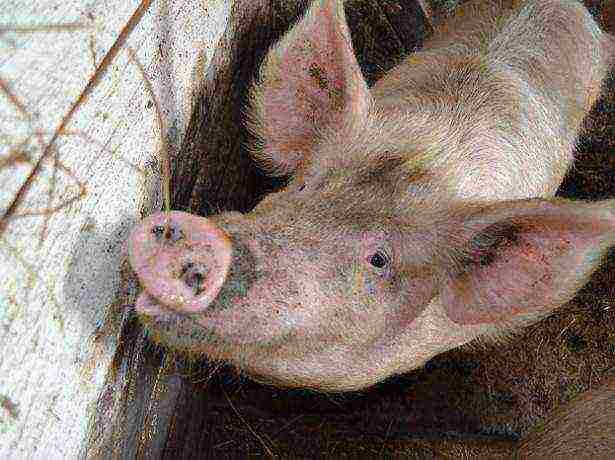
Make sure to create optimal conditions for piglets before you go to pick them up.
- warm waterproof roof;
- dense non-freezing walls;
- warm hard floor with gutters to remove excrement;
- optimal lighting;
- ventilation;
- heating devices, especially for the pen with newborn pigs.
When building a pigsty, those materials are used that keep heat well: brick, adobe, cinder blocks, shell rock (reinforced concrete is not suitable). From the inside, the walls are plastered and whitewashed for sanitary and hygienic reasons. The floor is recommended to be made of planks so that it is durable and warm. It is imperative to provide a slope for the drainage of water and urine. The machines are mounted from metal or wood.
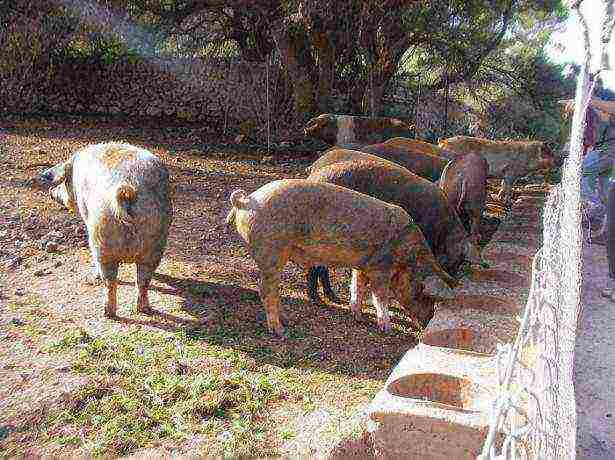
The drinker in the pen is installed at a low elevation so that animals do not pollute the water
The area of the walking area for pigs must be at least ten square meters. The drinker in the pen is installed at a low elevation so that the animals do not pollute the water.
Insemination of sows and rearing of piglets
For pig breeding, you can either regularly buy 6-8 week old piglets, or raise your own sows, which will produce two litters per year. But be prepared that the first offspring will have to wait no less than a year later, since maturity in pigs occurs after 8 months, and the gestation period lasts about 115 days.
A mating pig should weigh at least 100 kg by eight months, be healthy, free from defects and have 12 well-defined teats. A few days before mating, she is transferred to a more nutritious diet with juicy feed, concentrates, skim milk and kitchen waste, so that the pig will add 0.5 kg per day (no longer desirable).

A mating pig must weigh at least 100 kg by eight months
From the moment of the onset of sexual heat, which is easy to determine by the restless behavior of the animal, a kind of grunting and a reflex of immobility, the mumps after 12 hours happen to a boar, or they are inseminated artificially. After another 12 hours, mating is repeated, and over the next seventeen days, carefully monitor whether the sow has again appeared signs of heat. If not, then the pig was fertilized, otherwise the mating is carried out with another boar.
The pregnant pig is fed for the first three months, as before, and only from the second half of gestation do they begin to give more concentrated feed. It is important not to allow moldy, rotten, frozen foods to enter the feed in order to prevent the death of embryos.
Piglets are born very weak, so raising them with or without a sow is a very responsible business. Success is determined by suitable conditions of detention (temperature not lower than +18 degrees, no dampness and drafts, good lighting), as well as feed. Sow's milk not only provides piglets with immunity against various diseases, but is also a valuable food product, due to which babies can quickly gain weight in three weeks of the suckling period.
After that, the intensity of growth already depends on the piglets eating various feedings. Already from the fifth day after birth, the piglets are given skim milk, then steamed concentrates in the form of cereals, and from the 20th day, mashed root vegetables are added. Piglets are weaned from sows at the age of four weeks.
When growing piglets without a sow, they are fed warm cow or goat milk from a bottle with a nipple, accustoming them to feeding from the second week.
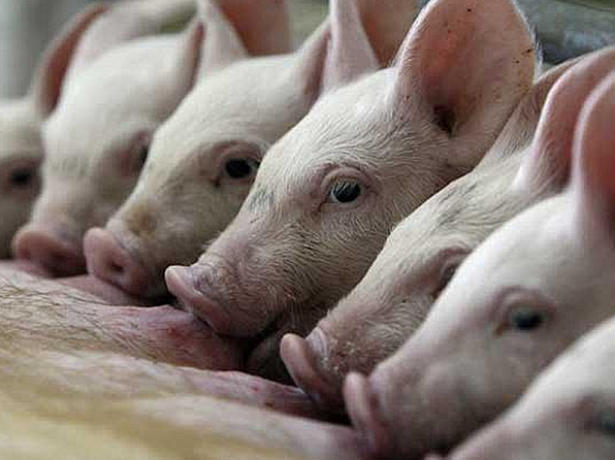
When raising piglets without a sow, they are fed warm cow or goat milk from a bottle with a teat
Small piglets have a very high risk of developing anemia, from which they begin to lag behind in growth, lose weight and die. In order to prevent iron deficiency, animals are injected intramuscularly with iron-containing preparations or iron vitriol is added to drinking water - for one pig, a teaspoon of solution (2.5 g vitriol per liter of water).
How to feed and how to feed pigs
Growing pigs is convenient because you can grow the bulk of the feed for them on your plot: carrots, pumpkins, sugar and fodder beets, potatoes, peas, alfalfa, etc.And from wild plants, you can prepare nettles, the most valuable for pigs.
When buying small pigs, it is recommended to feed them three times a day with boiled root vegetables with a small addition of crushed wheat and plant food (legumes or nettle scalded with boiling water) with whey. About two to three kilograms of feed should go to one pig per day. Additionally, 10 g of salt should be given to the animals every day.
Piglets need even more water than adult pigs - up to four liters a day. Moreover, the water in the trough should be changed two or three times a day to avoid contamination and infection with infectious diseases.
Pig breeding and keeping videos
Features of pigs feeding according to age:
- Piglets are fed from the age of three months. Since they need more protein for the active formation of muscle mass, boiled legumes, chopped cabbage leaves, boiled carrots, coarsely grated are added to the diet. The feed volume is increased to 4 kg per animal.
- By the seventh month of life in a pig, the ratio of muscle mass to fat begins to change, the growth of animals almost stops. The daily ration rate during this period should be about 6 kg, food is enriched with boiled sugar beets, the amount of salt consumed daily increases to 30 g.
- From eight months, the pig has been fattening up lard, therefore, peas and boiled corn, chopped zucchini, pumpkin and fatty waste should predominate in the diet from this time on. Fresh and cooked fruits will produce more tender, lean meat. The amount of daily feed for an eight-month-old pig should reach 7 kg, and the amount of salt should be 40 g.
- By the first year, in a well-fed pig, the ratio of meat to fat should be 60:40, with a weight of 250 kg. The amount of feed consumed per day is increased to 8 kg.
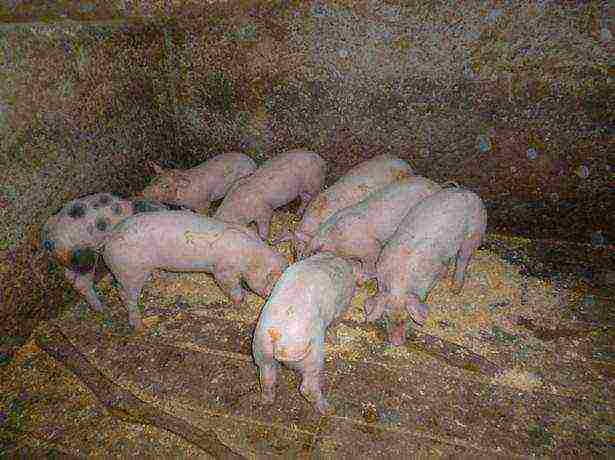
Piglets are fed from the age of three months
You can read more about the features of feeding pigs in the corresponding article on our website. If, with a full-fledged nutrition of the pigs, you cannot fatten them, it is possible that the animals simply do not have enough movement to gain muscle mass - give them a larger aviary.
Rate the article:
(12 votes, average: 3.6 out of 5)
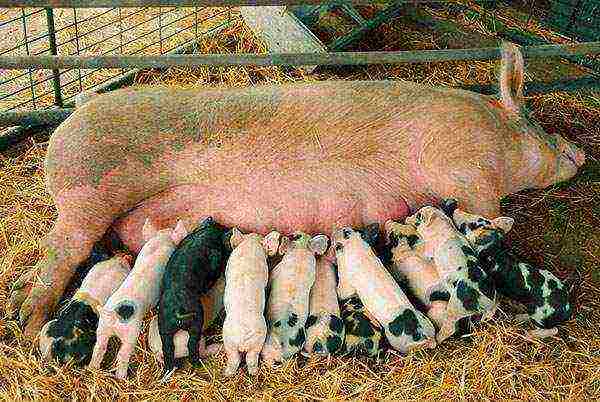 The peasant farm provides the family with food products of plant and animal origin. Pig farming is beneficial for many reasons. Getting meat after short-term fattening, disposal of food residues, summer keeping with grazing makes pork a cheap and affordable product.
The peasant farm provides the family with food products of plant and animal origin. Pig farming is beneficial for many reasons. Getting meat after short-term fattening, disposal of food residues, summer keeping with grazing makes pork a cheap and affordable product.
Is it profitable to keep pigs and why
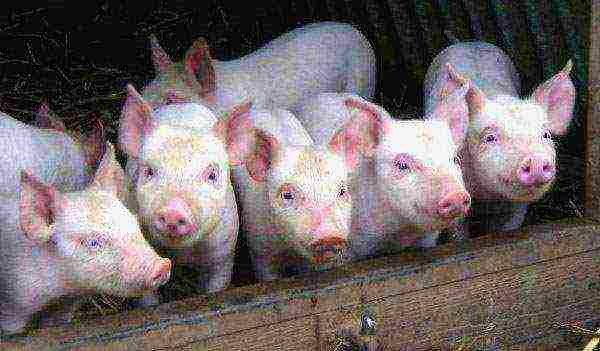 Pork production is beneficial for both the family and business development. In any economic situation, there will be a piece of meat on the table. With a small investment, you can start a pig breeding business on your own backyard. A unique animal will provide a stable income both when raising livestock for meat, and when keeping sows to sell offspring.
Pork production is beneficial for both the family and business development. In any economic situation, there will be a piece of meat on the table. With a small investment, you can start a pig breeding business on your own backyard. A unique animal will provide a stable income both when raising livestock for meat, and when keeping sows to sell offspring.
Objective data on the effectiveness of pig keeping:
- a rapid increase in the marketable weight, for a year of keeping the live weight of a newborn piglet increases 140 times;
- carcass weight compared to live weight is 85%, while in cattle it is 50-60%;
- for farrowing, the uterus brings up to 14 piglets, depending on the breed, each of which will bring $ 100-200 in a month;
- pigs assimilate up to 30% of the composition of the feed, in other domestic animals this figure does not exceed 20%.
 The correct choice of breed and a small investment will allow beginners to breed pigs at home to create a successful business. To meet the family's need for meat and lard, it is enough to buy two piglets in early spring. Toddlers don't need a lot of storage space. In the summer, animals grow rapidly.With the onset of autumn, there are many plant residues in the courtyard, which are a good forage base. For intensive feeding of pigs for two months before slaughter, it will be necessary to increase the consumption of protein feed. Aside from the labor of caring for the pigs, a year's supply of pork is cheap. You don't need a warm pigsty. But there are requirements for fattening pigs that must be met.
The correct choice of breed and a small investment will allow beginners to breed pigs at home to create a successful business. To meet the family's need for meat and lard, it is enough to buy two piglets in early spring. Toddlers don't need a lot of storage space. In the summer, animals grow rapidly.With the onset of autumn, there are many plant residues in the courtyard, which are a good forage base. For intensive feeding of pigs for two months before slaughter, it will be necessary to increase the consumption of protein feed. Aside from the labor of caring for the pigs, a year's supply of pork is cheap. You don't need a warm pigsty. But there are requirements for fattening pigs that must be met.
Keeping pigs at home requires the right approach to dietary choices. So a baby at the age of a month needs:
- the predominance of dairy products and cereals based on milk or its substitutes;
- the use of special premixes for piglets containing special sets of vitamins and antibiotics, so that the babies grow up healthy;
- maintain a feeding frequency appropriate for the age and stomach size of the piglet.
When fattening a piglet from 2 to 4 months, do not include raw potatoes in the diet, only mashed potatoes or a jerk. Root vegetables are best served boiled and chopped. It is more useful to feed carrots raw grated, the grass should be finely chopped and boiled with boiling water.
After slaughter, the pig carcass is treated with a blowtorch to remove the bristles. A high pressure washer will help wash off the carbon deposits. A compact car wash is available from car owners. The use of this processing method increases the presentation of the product.
Pig breeding and fattening business
 Any business requires planning. A pig breeding business plan should include an expenditure and revenue side. Pig breeding is profitable only if the requirements for the conditions of keeping and feeding the animals are met.
Any business requires planning. A pig breeding business plan should include an expenditure and revenue side. Pig breeding is profitable only if the requirements for the conditions of keeping and feeding the animals are met.
Therefore, the main item in the cost estimate is the construction of a pigsty based on an area of 4 sq. m per feed unit and 6 squares per sow. The room should include a den, a walking area and a canopy from the sun. A bathhouse should be provided for the pigs. If feeding is done in a shared trough, there should be enough room for each animal to approach.
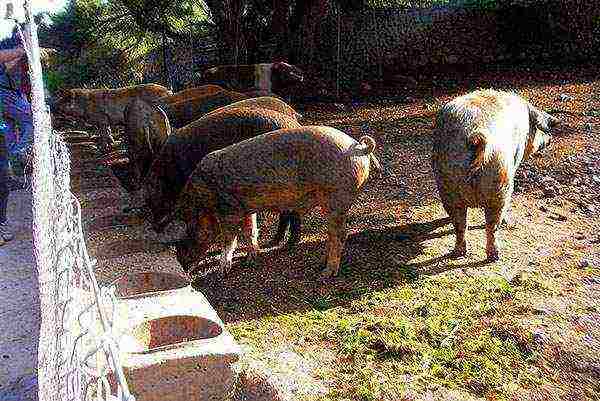 The stable must be strong so that the pig does not go into the wild as a result of the digging. Provide in the pigsty:
The stable must be strong so that the pig does not go into the wild as a result of the digging. Provide in the pigsty:
- roof, excluding leakage;
- natural and combined lighting;
- capital walls, excluding freezing;
- floor with waste gutters and clean, dry underlay;
- ventilation of the room.
When placed, there should be a walking area, on which pigs spend most of their time in the summer. In the open air, muscle gain is faster, animals get sick less.
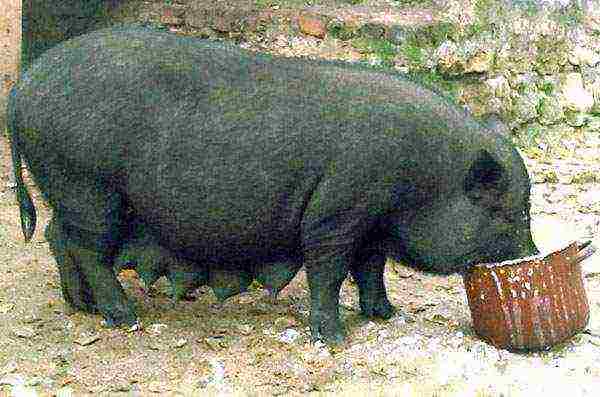 The expenditure part includes the acquisition of thoroughbred individuals. For commercial production of meat, the breeding of pigs of the desired breed must be carried out on the farm. This will reduce the cost of purchasing piglets on the outside and allow you to get healthy offspring for the herd.
The expenditure part includes the acquisition of thoroughbred individuals. For commercial production of meat, the breeding of pigs of the desired breed must be carried out on the farm. This will reduce the cost of purchasing piglets on the outside and allow you to get healthy offspring for the herd.
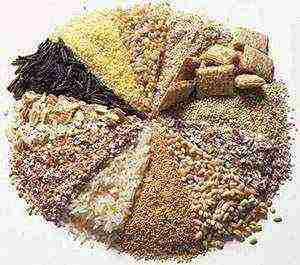 If piglets are purchased from other holdings, they must be quarantined before the herd is formed. It is necessary to budget for the vaccination of the herd at each stage of development. Without a certificate of veterinary control of the livestock, the legal sale of meat will be impossible.
If piglets are purchased from other holdings, they must be quarantined before the herd is formed. It is necessary to budget for the vaccination of the herd at each stage of development. Without a certificate of veterinary control of the livestock, the legal sale of meat will be impossible.
The current cost item will be the purchase of special feed for pigs, premixes and vitamin complexes. However, feed is much cheaper than meat. The cost of production is traditionally high. And if the growing technology is observed, the business risk is minimized, but this cost item needs to be planned.
With a large number of pigs, dry feeding is preferable. The increased feed costs will pay off with a greater weight gain and lower costs for fattening. At the same time, it is important to provide animals with water at 6-8 liters per head per day.
The income part takes into account that one sow can give up to 14 piglets, whose fattening will provide up to 3 tons of marketable products. Distribute profits by the timing of product receipt.If the resulting balance does not give the expected profit, the business plan for breeding pigs needs to be optimized. That is, find cheaper feed or suckers. Successful pig breeders in a backyard receive up to 1000% of the profit in 2-3 years.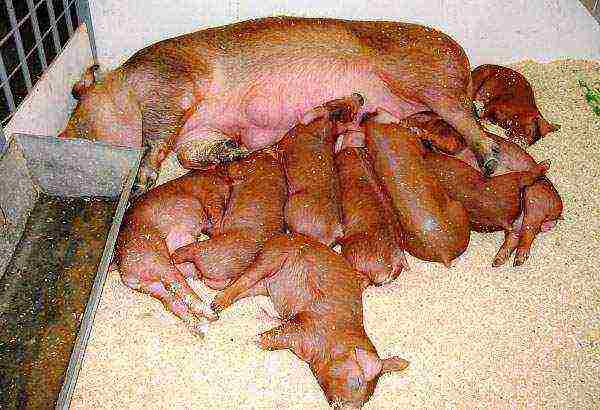
In order for raising pigs at home, as a business, to be successful, the following rules should be followed:
- observe hygienic conditions for keeping pigs;
- do not miss the time for the castration of pigs;
- to carry out preventive measures against diseases and avitaminosis of the livestock;
- observe the time and frequency of feeding animals, ensure constant access to water.
It is impossible to feed feed with mold and signs of acidification of liquid feed. Feeders should be periodically treated with boiling water.
When buying offspring from thoroughbred pigs, you need to know about the structural features of animals. You can get pork with a predominance of lard, bacon or meat from a particular breed.
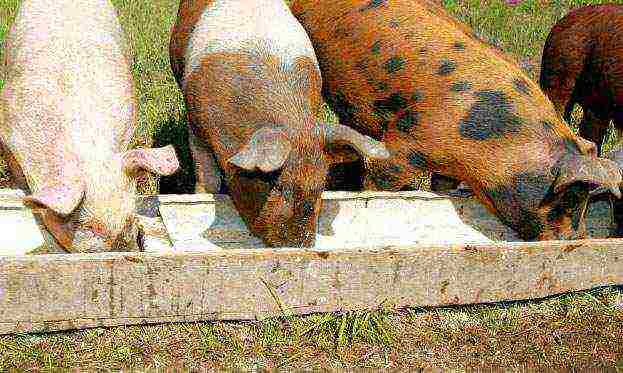 Is it profitable to keep pigs? There is no other way to provide a family with meat at cost. To organize a business with a small number of heads, the sale of meat will take place without going to trading floors. Neighbors will become buyers. Livestock products are always in steady demand.
Is it profitable to keep pigs? There is no other way to provide a family with meat at cost. To organize a business with a small number of heads, the sale of meat will take place without going to trading floors. Neighbors will become buyers. Livestock products are always in steady demand.
Agricultural revolution - video
Part 1
Part 2
A question about business in rural areas almost always leads to an answer about one's own agricultural business. One way or another, almost any peasant is engaged in agriculture: he grows vegetables, breeds chickens and small livestock. But not everyone sees it as a promising business.
In fact, food production is one of the reliable sources of income, because the demand for such products does not dry out. Livestock farms are especially relevant: fewer farmers are engaged in meat than in the fields, but work in such a production is year-round and profit is the same.
Pig breeding will allow selling lard and pork meat that are in demand in kitchens, as well as offering young pigs to other farmers and owners of subsidiary plots.
Raising pigs at home as a business
Pig breeding as a business is not suitable for those who want to start a business from scratch, as it requires serious expenses, and it does not bring profit in the first year. However, with the initial capital, you can create a strong pig farm, which will soon begin to support itself and generate income.
Design: is it necessary or not?
The words "home business" do not always mean legal entrepreneurship. Handicraft industries are often "in the shadows" - they do not pay taxes, do not issue checks. This situation carries a number of dangers for the state:
- taxes do not go to the budget;
- errors in accounting for jobs and market estimates;
- there is no control over products.
The last point is especially acute when it comes to food products, including pig meat. Pigs can carry diseases that are dangerous to humans, including the infamous "swine" AH1N1. Therefore, the punishment for such activities is severe, criminal: Art. 171 of the Criminal Code of the Russian Federation for "gray" business, art. 238 - for non-certified products.
Where does the pig business start?
In Russia, the household falls under the definition of a personal subsidiary. However, the definition says that this is not an entrepreneurial activity - that is, not a business. It is understood that the products of the subsidiary farm go to the needs of the family, leading it, and only the surplus is sold. Systematic sales of products are perceived by tax inspectors as a business.
Official registration as a peasant farm will force the owner of the pig farm:
- pay taxes;
- report on the results of work;
- conduct veterinary checks.
The procedure for registering a peasant farm
But this situation has a number of advantages as well. In addition to moral satisfaction, these are:
- the possibility of state support;
- simplified taxes - simplified tax system, unified agricultural tax and others;
- the possibility of lending to the farm;
- official sale of goods to large firms and networks.
Business plan
In anticipation of all the further details, let us examine a typical business plan for home-raising pigs. He must take into account all the main details of this livestock industry. The calculations are based on the fact that the farm starts from scratch, which means that you need to stock up on money for the entire period until the first profit is made. The cost of the plot is not included in the calculations: buying separately land for such a small farm is ruinous.
Optimal start-up livestock - 10 piglets
The optimal livestock for the start is 10 piglets, of which 8 are females and 2 boars. This is one of the main investments: future pigs will cost 60-150 thousand rubles.
Each piglet eats about 400 kg of compound feed during the feeding period, a total of 4 tons is required. With an average price in Russia of 7 thousand rubles per ton, 28 thousand already come out.
The equipment of the pigsty will have to pay from 25 thousand: drinkers, feeders, lamps, partitions will be included here. About 15 thousand more will go to inventory.
Additionally, you may need to hire workers to equip the farm, here the price will vary greatly. In total, in practice, it is necessary to invest from 150 to 250 thousand rubles. Depending on the region and the characteristics of the farm itself, the numbers may vary.
the pig matures by 9-10 months and gains 120-130 kilograms
Normally, a pig matures by 9-10 months and gains 120-130 kilograms. The slaughter yield in these animals is 75% of the weight, that is, 90-100 kilograms of meat and lard from the carcass. With an average price of 300 rubles per kilogram, this is about 30 thousand rubles. Thus, the easiest way to recoup a farm is to invest 200 thousand rubles in it, raise 10 pigs and help out 300 thousand for their slaughter, that is, only 100 thousand in 10 months of work. A stable farm brings more.
To provide your family with a stable business, you need to take a responsible approach to its creation and understand all the intricacies of the pig-breeding process.
Pig breed selection
Pig breeds are divided into three types, depending on the meat obtained from them:
- bacon - there are a lot of fat layers in the meat, but there is no layer of fat;
- lard-meat - high-quality lard, while there is also meat;
- meat-greasy - the output is mainly meat.
In total, about 30 breeds of pigs of different categories are widely used in Russia. They differ within their groups by characteristics: growing time, weight, dietary value of meat.
Pig breeds: 1 — large white; 2 — Latvian white; 3 — Lithuanian white; 4 — landrace; 5 — Ukrainian steppe white; 6 — Estonian bacon; 7 — North Caucasian; 8 — Mirgorodskaya; 9 — Urzhum; 10 — Belarusian black-and-white.
However, first of all, you need to choose a breed not according to characteristics, but according to demand in the local market. This is especially important for farmers who plan to sell dairy pigs for breeding in addition to meat: it is necessary that there are colleagues in the district who grow the same breed. This will also make it easier to find a boar for breeding pigs.
The most popular breed in Russia is the Large White. Historically, these pigs came to our country from England, but domestic breeding has made a strong contribution to their current appearance. Weight of 100 kilograms gains in 7 months, and adult pigs weigh up to 360 kg (boars) and up to 260 kg (sows). The breed belongs to the meat-greasy direction.
Large white breed of pigs
The most popular bacon breed in Russia is Landrace. Young pigs of this breed gain a centner in less than 7 months, and as a result males grow up to 300 kilograms and females up to 220 kg.
Pig breed Landrace
It is difficult to single out a priority breed among the lard-meat breeds in our country; as an example, we can cite the large black breed. Boars of this breed grow up to 310 kg, sows - up to 215 kg, weights of 100 kilograms also gain in 6-7 months.
Pig breed Large Black
In some cases, the choice of less common breeds that give dietary meat will be justified. Although pork is generally not considered a wholesome food due to its high fat content, nutritional connoisseurs of pork are ready to buy meat from breeds such as Vietnamese pot bellies or pietrain. Pigs of both breeds are smaller than other inhabitants of the pigsty and are more expensive to buy, but their meat is also valued higher.
Pig breed Vietnamese pot belly
Petren boar
Premises
The best pigsty design includes three areas: stables for pigs living, a shed area, and a bathing pit.The main requirements are for a covered pigsty with stalls.
Pigs should be divided into stalls. Pigs can conflict, and it is best to allocate a separate pen for each - a small livestock allows this. A young pig requires an area of 2.5 meters, a sow with piglets is placed in a five-meter pen, it is better to assign the same number of "squares" to an adult boar. If necessary, pigs can be kept in groups of no more than 25 heads, but sows with offspring must still be removed. Pigs are fed in pens, in the summer - on the walk.
Sample pigsty project
Pigs are thermophilic and are afraid of drafts, so the pigsty should be insulated for the winter. The optimum temperature for young animals is 18-22 degrees, for adults - 12-16 degrees. Heating can be done.
To reduce the amount of dirt and stench, the floor should be sloped, with gutters for urine flow, or concrete slit; the room must be well ventilated.
It is necessary to prevent the appearance of rats - the pigsty should be made of stone with a solid foundation.
Lighting should be mandatory in sow pens, so as not to crush piglets in the dark, and at the feeders. In winter, it is better to light up all pigs, but given that in too lit rooms the animals become nervous.
Maintenance and feed
Having bought or raised piglets, you need to start intensive fattening soon: it starts at 1.5-2 months. In the first months of life, piglets should grow to young pigs weighing about 100-120 kilograms. On average, it takes 7-8 months and about 400 kilograms of feed with vitamin and mineral supplements.
The quality of the feed directly affects the quality of the pig meat
Piglets are fed up to 3 months 5 times a day, the next two months - four times, older than 5 months, pigs are fed three times a day. After each feeding, the troughs need to be cleaned.
Although pigs are omnivores, the quality of the feed directly affects the quality of their meat. Therefore, it is wrong to feed them with leftovers from the table. The diet of animals should include vegetables and fruits, cereals, a lot of root crops, as well as purchased protein feed with the addition of essential microelements.
Piglets are given boiled root vegetables, to which they add a little chopped wheat and herbaceous food - bean tops, nettles. Whey is also kneaded into the feed. As additives, you can use salt - 10 g per day and iron vitriol - a teaspoon of a solution prepared from a liter of water and 2.5 g of the substance, or add a little clay to the trough.
| 2-3 | 5 | 2-3 | 25 |
| 3-4 | 5 | 4 | 40-60 |
| 7 | 4 | 6 | 90-110 |
| 8 | 3 | 7 | 130 and more |
| 12 and older | 3 | 8 | More than 200 |
From the eighth month, fattening ends and the stage of fattening begins: it's time for the owners to give the pig more legumes, zucchini, fatty waste, increase the salt addition to 40 g.
For large farms, it is more profitable to grow feed for pigs themselves, but with a small pig farm, the benefits become completely invisible, so you can concentrate on the pigs, and entrust the care of feed to specialists.
Pigs definitely need walks: in a warm season, it is best to feed them outside, and then give them half an hour to defecate. In winter, pigs should walk two to three times a week for immunity. Fresh air helps you gain weight.
Every day it is necessary to monitor the cleanliness in the pigsty, examine the pigs, clean their wool. At least once a month, the pigsty needs to be disinfected.
Video - Proper feeding of piglets and summer walking
Workers
The advantage of a small farm is that you can start work in it yourself or on a “family contract” - that is, within the criteria for a personal subsidiary farm, in which hired workers are prohibited. Thanks to this, the business plan does not need to include expenses for the payment of wages.
However, it is unlikely that the organizer of a small "pig" enterprise has all the competencies necessary for this business. Sometimes it may be necessary to involve outside specialists.At different times it can be:
- builders at the stage of building a pigsty;
- veterinarian for regular examination of animals and quality control of meat;
- tractor drivers, drivers for the supply of large consignments of feed, straw, shipment of cleaned waste;
- farmers for the supply of vegetables and tops for fodder.
Pig care
However, any business requires development, and over time, a pig farm that started with 10 piglets can grow into something more. In a family business, over time, you can hire:
- pig breeders for feeding and drinking pigs, controlling farrowing;
- handymen - to clean the cages, look after the livestock;
- zootechnician or several - to control the content of pigs, feed, selection of the best animals;
- veterinarian - you can think about your own veterinarian after 100 heads, and hire when you reach three hundred.
Tax
Having registered as an agricultural business, the owner of a peasant farm can choose one of three available taxation options:
- general system;
- simplification;
- unified agricultural tax.
The general and simplified tax systems for the farm do not differ from these systems for sole proprietors.
Under OSN, the farmer pays income tax of 13%, VAT 10% (meat is included in the preferential category of goods) and other taxes: land, transport, as well as fees. At the same time, “tax holidays” apply to personal income tax - 5 years from the date of registration. The use of VAT is attractive to consumers on DOS who can offset value added tax from the budget.
Unified agricultural tax
The simplified tax system works for a farm according to the usual scheme. It is necessary to write in a tax statement and pay either 6% of all income, or 5-15% of the difference between income and expenses.
The most profitable option in many regions is specially developed for farmers by the Unified Agricultural Taxation. It works like the STS “income minus expenses”, only its rate throughout the country is 6%, and in the “simplified” version only in some regions it is 5% or 6%, in most of the same it is more.
Start-up capital
As already mentioned, the starting capital for a small farm of 10 heads is estimated at 150-250 thousand rubles, provided that there is already land and some buildings on it that can be adapted for a pigsty.
Few people can boast of free savings in such amounts, especially in rural areas where such a business is supposed to be opened.
The starting capital for a small farm of 10 heads is estimated at about 150-250 thousand
So what are the start-up capital opportunities?
- Own savings. Still, it is the most reliable source of money.
- Loans from friends or running a business together. Almost the same.
- Bank loan. A novice farmer can get it on conditions close to consumer ones.
- Subsidy from the employment center. Will cover only part of the costs.
- Grant from the Ministry of Agriculture. Requires its own investment.
If the first three ways to raise money do not raise questions, then the means of assistance from the state are already more interesting. Moreover, it should be noted that grants for opening farms from the Ministry of Agriculture differ in the regions and most often involve relatively large farms.
In such a situation, you can consider a subsidy from the employment center. Rostrud conducts a program "get busy" for the unemployed, sitting on benefits. The essence of the program is that those who wish can receive their pension a year in advance and invest in their own business, including the agricultural one. This amount is small, about 50 or a little more than a thousand rubles, but it can be a good help in creating a small pig farm along with your money or a bank loan.
Sales
Pork cutting diagram
The most important function of a pig farm as a business is making money, which is unrealistic without sales channels. First of all, even at the planning stage, you need to decide how the farm will generate income. It can be:
- meat;
- Salo;
- dairy pigs.
The question of the goals of the economy has already been raised in the section on the breed of pigs. In fact, all three points are applicable to any pig farm, only in different proportions.
- sell to friends, while the volumes are small;
- sell in the local market;
- sell to a processing plant;
- sell in a cafe;
- offer through newspapers;
Modern ways through which you can offer the purchase of meat and lard:
- creating your own website;
- through social networks and blogs;
- on local sites and forums;
- through channels in instant messengers, which can also be advertised in social networks and on websites.
An interesting option is to keep your blog on special sites where you can post photographs. Adult pigs look attractive only when finished, but young piglets can attract users in much the same way as cats. You can add interest to your blog by diluting offers to buy products with recipes with pork or notes from the life of a farmer.
Growing pigs at home as a business shows itself to be a fairly reliable source of future earnings, which, nevertheless, requires a serious investment of money and effort at the first stage. This business is not suitable for those who want to make quick profits or are not ready to work in typical agricultural conditions. But hardworking and patient people can find an outlet here and, in the long term, a stable income.
Video - Keeping pigs at home
A question about business in rural areas almost always leads to an answer about one's own agricultural business. One way or another, almost any peasant is engaged in agriculture: he grows vegetables, breeds chickens and small livestock. But not everyone sees it as a promising business.
In fact, food production is one of the reliable sources of income, because the demand for such products does not dry out. Livestock farms are especially relevant: fewer farmers are engaged in meat than in fields, but work in such production is year-round and profit is also.
Pig breeding will allow selling lard and pork meat that are in demand in kitchens, as well as offering young pigs to other farmers and owners of subsidiary plots.
? Raising pigs at home as a business
Pig breeding as a business is not suitable for those who want to start a business from scratch, as it requires serious expenses, and it does not bring profit in the first year. However, with the initial capital, you can create a strong pig farm, which will soon begin to support itself and generate income.
Design: is it necessary or not?
The words "home business" do not always mean legal entrepreneurship. Handicraft industries are often "in the shadows" - they do not pay taxes, do not issue checks. This situation carries a number of dangers for the state:
- taxes do not go to the budget;
- errors in accounting for jobs and market estimates;
- there is no control over products.
The last point is especially acute when it comes to food products, including pig meat. Pigs can carry diseases that are dangerous to humans, including the infamous "swine" AH1N1. Therefore, the punishment for such activities is severe, criminal: Art. 171 of the Criminal Code of the Russian Federation for "gray" business, art. 238 - for non-certified products.
Where does the pig business start?
In Russia, the household falls under the definition of a personal subsidiary. However, the definition says that this is not an entrepreneurial activity - that is, not a business. It is understood that the products of the subsidiary farm go to the needs of the family, leading it, and only the surplus is sold. Systematic sales of products are perceived by tax inspectors as a business.
Official registration as a peasant farm will force the owner of the pig farm:
- pay taxes;
- report on the results of work;
- conduct veterinary checks.
The procedure for registering a peasant farm
But this situation has a number of advantages as well.In addition to moral satisfaction, these are:
- the possibility of state support;
- simplified taxes - simplified tax system, unified agricultural tax and others;
- the possibility of lending to the farm;
- official sale of goods to large firms and networks.
Business plan
In anticipation of all the further details, let us examine a typical business plan for raising pigs at home. He must take into account all the main details of this livestock industry. The calculations are based on the fact that the farm starts from scratch, which means that you need to stock up on money for the entire period until the first profit is made. The cost of the plot is not included in the calculations: buying separately land for such a small farm is ruinous.
Optimal start-up livestock - 10 piglets
The optimal livestock for the start is 10 piglets, of which 8 are females and 2 boars. This is one of the main investments: future pigs will cost 60-150 thousand rubles.
Each piglet eats about 400 kg of compound feed during the feeding period, a total of 4 tons is required. With an average price in Russia of 7 thousand rubles per ton, 28 thousand already come out.
The equipment of the pigsty will have to pay from 25 thousand: drinkers, feeders, lamps, partitions will be included here. About 15 thousand more will go to inventory.
Additionally, you may need to hire workers to equip the farm, here the price will vary greatly. In total, in practice, it is necessary to invest from 150 to 250 thousand rubles. Depending on the region and the characteristics of the farm itself, the numbers may vary.
the pig grows up by 9-10 months and gains 120-130 kilograms
Normally, a pig matures by 9-10 months and gains 120-130 kilograms. The slaughter yield in these animals is 75% of the weight, that is, 90-100 kilograms of meat and lard from the carcass. With an average price of 300 rubles per kilogram, this is about 30 thousand rubles. Thus, the easiest way to recoup a farm is to invest 200 thousand rubles in it, raise 10 pigs and help out 300 thousand for their slaughter, that is, only 100 thousand in 10 months of work. A stable farm brings more.
To provide your family with a stable business, you need to take a responsible approach to its creation and understand all the intricacies of the pig-breeding process.
Pig breed selection
Pig breeds are divided into three types, depending on the meat obtained from them:
- bacon - there are a lot of fat layers in the meat, but there is no layer of fat;
- lard-meat - high-quality lard, while there is also meat;
- meat and greasy - the output is mainly meat.
In total, about 30 breeds of pigs of different categories are widely used in Russia. They differ within their groups by characteristics: growing time, weight, dietary value of meat.
Pig breeds: 1 — large white; 2 — Latvian white; 3 — Lithuanian white; 4 — landrace; 5 — Ukrainian steppe white; 6 — Estonian bacon; 7 — North Caucasian; 8 — Mirgorodskaya; 9 — Urzhum; 10 — Belarusian black-and-white.
However, first of all, you need to choose a breed not according to characteristics, but according to demand in the local market. This is especially important for farmers who plan to sell dairy pigs for breeding in addition to meat: it is necessary that there are colleagues in the district who grow the same breed. This will also make it easier to find a boar for breeding pigs.
The most popular breed in Russia is the Large White. Historically, these pigs came to our country from England, but domestic breeding has made a strong contribution to their current appearance. Weight of 100 kilograms gains in 7 months, and adult pigs weigh up to 360 kg (boars) and up to 260 kg (sows). The breed belongs to the meat-greasy direction.
Large white breed of pigs
The most popular bacon breed in Russia is Landrace. Young pigs of this breed gain a centner in less than 7 months, and as a result males grow up to 300 kilograms and females up to 220 kg.
Pig breed Landrace
It is difficult to single out a priority breed among the lard-meat breeds in our country; as an example, we can cite the large black breed. Boars of this breed grow up to 310 kg, sows - up to 215 kg, weights of 100 kilograms also gain in 6-7 months.
Pig breed Large Black
In some cases, the choice of less common breeds that give dietary meat will be justified. Although pork is generally not considered a wholesome food due to its high fat content, nutritional connoisseurs of pork are ready to buy meat from breeds such as Vietnamese pot bellies or pietrain. Pigs of both breeds are smaller than other inhabitants of the pigsty and are more expensive to buy, but their meat is also valued higher.
Pig breed Vietnamese pot belly
Petren boar
Premises
The best pigsty design includes three areas: stables for pigs living, a shed area, and a bathing pit. The main requirements are for a covered pigsty with stalls.
Pigs should be divided into stalls. Pigs can conflict, and it is best to allocate a separate pen for each - a small livestock allows this. A young pig requires an area of 2.5 meters, a sow with piglets is placed in a five-meter pen, it is better to assign the same number of "squares" to an adult boar. If necessary, pigs can be kept in groups of no more than 25 heads, but sows with offspring must still be moved out. Pigs are fed in pens, in the summer - on the walk.
Sample pigsty project
Pigs are thermophilic and are afraid of drafts, so the pigsty should be insulated for winter time. The optimum temperature for young animals is 18-22 degrees, for adults - 12-16 degrees. Heating can be done.
To reduce the amount of dirt and stench, the floor should be sloped, with gutters for urine drainage, or concrete slit; the room must be well ventilated.
It is necessary to prevent the appearance of rats - the pigsty should be made of stone with a solid foundation.
Lighting should be mandatory in sow pens, so as not to crush piglets in the dark, and at the feeders. In winter, it is better to light up all pigs, but given that in too lit rooms the animals become nervous.
Maintenance and feed
Having bought or raised piglets, you need to start intensive fattening soon: it starts at 1.5-2 months. In the first months of life, piglets should grow to young pigs weighing about 100-120 kilograms. On average, it takes 7-8 months and about 400 kilograms of feed with vitamin and mineral supplements.
The quality of the feed directly affects the quality of the pig meat
Piglets are fed up to 3 months 5 times a day, the next two months - four times, older than 5 months, pigs are fed three times a day. After each feeding, the troughs need to be cleaned.
Although pigs are omnivores, the quality of the feed directly affects the quality of their meat. Therefore, it is wrong to feed them with leftovers from the table. The diet of animals should include vegetables and fruits, cereals, a lot of root crops, as well as purchased protein feed with the addition of essential microelements.
Piglets are given boiled root vegetables, to which they add a little chopped wheat and herbaceous food - bean leaves, nettles. Whey is also kneaded into the feed. As additives, you can use salt - 10 g per day and iron vitriol - a teaspoon of a solution prepared from a liter of water and 2.5 g of the substance, or add a little clay to the trough.
| 2-3 | 5 | 2-3 | 25 |
| 3-4 | 5 | 4 | 40-60 |
| 7 | 4 | 6 | 90-110 |
| 8 | 3 | 7 | 130 and more |
| 12 and older | 3 | 8 | More than 200 |
From the eighth month, fattening ends and the stage of fattening begins: it's time for the owners to give the pig more legumes, zucchini, fatty waste, the salt addition is increased to 40 g.
For large farms, it is more profitable to grow feed for pigs themselves, but with a small pig farm, the benefits become completely invisible, so you can concentrate on the pigs, and entrust the care of feed to specialists.
Pigs definitely need walks: in a warm season, it is best to feed them outside, and then give them half an hour to defecate. In winter, pigs should walk two to three times a week for immunity. Fresh air helps you gain weight.
Every day it is necessary to monitor the cleanliness in the pigsty, examine the pigs, clean their wool.At least once a month, the pigsty should be disinfected.
Video - Proper feeding of piglets and summer walking
Workers
The advantage of a small farm is that you can start work in it yourself or as a "family contract" - that is, within the criteria for a personal subsidiary farm, in which hired workers are prohibited. Thanks to this, the business plan does not need to include the costs of paying salaries.
However, it is unlikely that the organizer of a small "pig" enterprise has all the competencies necessary for this business. Sometimes it may be necessary to involve outside specialists. At different times it can be:
- builders at the stage of building a pigsty;
- veterinarian for regular examination of animals and quality control of meat;
- tractor drivers, drivers for the supply of large quantities of feed, straw, shipment of cleaned waste;
- farmers for the supply of vegetables and tops for fodder.
Pig care
However, any business requires development, and over time, a pig farm that started with 10 piglets can grow into something more. In a family business, over time, you can hire:
- pig breeders for feeding and drinking pigs, controlling farrowing;
- handymen - to clean the cages, look after the livestock;
- zootechnician or several - to control the content of pigs, feed, selection of the best animals;
- veterinarian - you can think about your own veterinarian after 100 heads, and hire when you reach three hundred.
Tax
Having registered as an agricultural business, the owner of a peasant farm can choose one of three available taxation options:
- general system;
- simplification;
- unified agricultural tax.
The general and simplified tax systems for the farm do not differ from these systems for sole proprietors.
Under OSN, the farmer pays income tax of 13%, VAT 10% (meat is included in the preferential category of goods) and other taxes: land, transport, as well as fees. At the same time, “tax holidays” apply to personal income tax - 5 years from the date of registration. The use of VAT is attractive to consumers on DOS who can offset value added tax from the budget.
Unified agricultural tax
The simplified tax system works for a farm according to the usual scheme. It is necessary to write in a tax statement and pay either 6% of all income, or 5-15% of the difference between income and expenses.
The most profitable option in many regions is specially developed for farmers by the Unified Agricultural Taxation. It works like the STS “income minus expenses”, only its rate throughout the country is 6%, and in the “simplified” version only in some regions it is 5% or 6%, in most of the same it is more.
Start-up capital
As already mentioned, the starting capital for a small farm of 10 heads is estimated at 150-250 thousand rubles, provided that there is already land and some buildings on it that can be adapted for a pigsty.
Few people can boast of free savings in such amounts, especially in rural areas where such a business is supposed to be opened.
The starting capital for a small farm of 10 heads is estimated at about 150-250 thousand
So what are the start-up capital opportunities?
- Own savings. Still, it is the most reliable source of money.
- Loans from friends or running a business together. Almost the same.
- Bank loan. A novice farmer can get it on conditions close to consumer ones.
- Subsidy from the employment center. Will cover only part of the costs.
- Grant from the Ministry of Agriculture. Requires its own investment.
If the first three ways to raise money do not raise questions, then the means of assistance from the state are already more interesting. Moreover, it should be noted that grants for opening farms from the Ministry of Agriculture differ in the regions and most often involve relatively large farms.
In such a situation, you can consider a subsidy from the employment center.Rostrud conducts a program "get busy" for unemployed, sitting on benefits. The essence of the program is that those who wish can receive their pension a year in advance and invest in their own business, including the agricultural one. This amount is small, about 50 or a little more than a thousand rubles, but it can be a good help in creating a small pig farm along with your money or a bank loan.
Sales
Pork cutting diagram
The most important function of a pig farm as a business is making money, which is unrealistic without sales channels. First of all, even at the planning stage, you need to decide how the farm will generate income. It can be:
- meat;
- Salo;
- dairy pigs.
The question of the goals of the economy has already been raised in the section on the breed of pigs. In fact, all three points apply to any pig farm, only in different proportions.
- sell to friends, while the volumes are small;
- sell in the local market;
- sell to a processing plant;
- sell in a cafe;
- offer through newspapers;
Modern ways through which you can offer the purchase of meat and lard:
- creating your own website;
- through social networks and blogs;
- on local sites and forums;
- through channels in messengers, which can also be advertised in social networks and on websites.
An interesting option is to keep your blog on special sites where you can post photographs. Adult pigs look attractive only when finished, but young piglets can attract users in much the same way as cats. You can add interest to your blog by diluting offers to buy products with recipes with pork or notes from the life of a farmer.
Growing pigs at home as a business shows itself to be a fairly reliable source of future earnings, which, nevertheless, requires a serious investment of money and effort at the first stage. This business is not suitable for those who want to make quick profits or are not ready to work in typical agricultural conditions. But hardworking and patient people can find an outlet here and, in the long term, a stable income.
Video - Pig keeping at home

